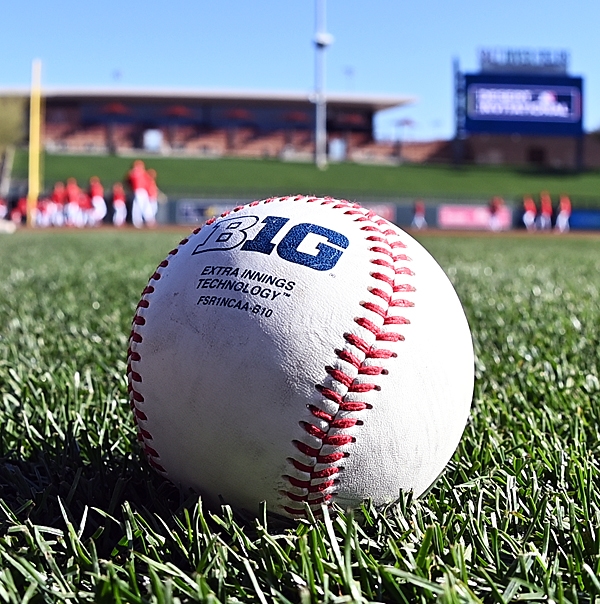
It’s not throwing strikes, and it’s not hitting the curveball. The hardest thing about playing college baseball is a psychological reality. No one knows you’re doing it.
 Columbus, OH – What I’m about to say is going get under some skin – something that never gets written – and for no better reason than…if the shoe fits, wear it!
Columbus, OH – What I’m about to say is going get under some skin – something that never gets written – and for no better reason than…if the shoe fits, wear it!
So hold on to your mouse. On the eve of another college baseball season I’m going to state what I’ve known for fifty years…that the hardest part of playing college baseball at any level is not throwing strikes.
It’s not hitting the curve.
It’s not turning the double play, or even getting the final out of the game with the bases loaded.
All of these are hard, it’s true.
But I’m not lying when I share with you that the hardest thing about playing college baseball, anywhere, is the reality of playing in anonymity – that NO ONE knows you’re playing. And you read it right.
You can’t play college baseball at a higher level than the Big Ten Conference – a Power Five Conference – the Mount Rushmore of college sports. And yet, how would anyone know? Literally, we’re twelve days from first pitch of the 2025 season and there’s no mention of it in mainstream local media, anywhere across the conference. And fifty years after I first noticed, nothing has changed.
When I came to Ohio State in 1971 the only thing smaller than the number of fans was the media willing to cover it. In the four years that I played between ’71 and ’75, only one local writer ever showed up to watch baseball.
His name was Kaye Kessler and he wrote for the afternoon paper that time in Columbus, the Citizen-Journal. Kessler was a different cat, a likeable guy who marched to his own beat and delighted in antagonizing then coach Marty Karow with his barbs and questioning. They got along because Kessler and Karow both loved golf, and Karow knew that Kessler was a close friend of Jack Nicklaus. Years after the Citizen-Journal he would become a popular media figure in golf while living in Littleton, Colorado, where he died in 2021 at age 97!

“Polish your ring lately, Marty?” Former Citizen-Journal writer Kaye Kessler was the only media scribe to write Ohio State baseball in the 70s.
“Polish your ring lately, Marty?” Kessler would ask, a reference to the Buckeyes’ NCAA championship in 1966. Five years later, Karow and the Buckeyes had fallen back to pedestrian respect in the Big Ten, and now 58 years later the program has not again threatened the College World Series.
Kessler would needle Karow about star pitcher, the late OSU hall of famer Steve Arlen, who pitched the Buckeyes to that championship. Starter, reliever, Arlen (from Lima Shawnee High School who briefly played basketball for the Buckeyes) could do it all. A physical phenomenon, he could pitch until his arm fell off and later enjoyed a successful major league career.
“Good thing you took Arlen with you [to Omaha],” Kessler once said to Karow. “Did you plan it that way?”
I got to know Kessler a little bit over four years, and his infrequent visits to old Trautman Field. He always had a good story, and a good ear for another one. And I asked him one day, “Are you the only person who writes about baseball?”
Kessler’s ever-present smile disappeared as he slapped his notebook shut and addressed my question. “Son,” he said. “The Dispatch and Channel 4 are all over there.” He pointed to spring football drills going on across the way at the North Athletic Facility.
More or less, it’s still that way. Daily coverage of college baseball, anywhere, is not a priority for the local writers. Fifty years later, and to his point, since the start of this past fall semester I’ve kept some online vigil with respect to current coverage at other Big Ten schools……
Minneapolis Star-Tribune….nothing on Gopher baseball and first-year coach Ty McDevitt, who replaces the iconic John Anderson this spring. Anderson won a conference record 1,390 games in a 43-year career.
Iowa City Press-Citizen…even with the opening of the Hawkeyes new baseball stadium in 2025, you read about Hawkeye wrestling. But nothing on baseball.
Detroit Free Press…with two Big Ten baseball schools right in its back yard, if you play college baseball in Michigan only the sports information people know.
The Baltimore Sun/Washington Post (Maryland)…everything but baseball!
Chicago Tribune (Northwestern)…surely you jest.
The Register-Guard in Eugene, Oregon…one of the four PAC 12 teams to join the Big Ten, and with 25 days prior to embarking on a new conference, and ranked #12, nationally…? Nothing!
The Los Angeles Times…where Tom Seaver and a hundred other big leaguers played, and not a word on USC baseball over a six-week period since fall baseball, a program that’s won 12 national titles. Interestingly, there are literally books written on the 11 national titles they’ve won in football!
You can make the argument that the public is more interested in Power Five football than baseball because it sells, and it brings in huge revenue. Money and attention pours into football from media and alumni, alike. Baseball, in comparison, sees barely a trickle.
But as major league scouts are quick to say, “Let someone in baseball get to the big leagues and write a big check. And see how quick they cash it.”
For decades I’ve listened to the sentiments of former college players who never looked for attention at the time…just that its absence was hard not to notice. Jon Warden, who pitched for the 1968 World Champion Detroit Tigers, was an OSU grad assistant coach in 1974, and once said, “I don’t think anyone knows we’re here. Do we have to keep score?”
OSU equipment manager John Bozick once admitted: “Starting pitchers and starting quarterbacks have the same responsibility. Just different respect.”
And in a column from the Big Ten Tournament last spring, when I wrote about Ohio State and Nebraska being the Mt. Rushmore of amateur baseball in their respective states, a reader responded to say: “Maybe if the NCAA took baseball more seriously fans would, too.”

Columnist Sonny Fulks writes OHSAA sports and Ohio State baseball for Press Pros Magazine.com.
So it’s not an Ohio State problem. It’s an NCAA problem where media priority is squarely focused on that which draws the biggest crowds and national appeal. Compare, if you will, the recent football playoffs and next July’s tournament trail for baseball.
And now comes the question of revenue sharing and NIL. Is there enough money to go around for 30 sports, with only two that likely pay for themselves? Things are changing, but not with attention for baseball. Except…..
When the College World Series rolls around ESPN promotes the hell out of it and the people show up – watch it on TV. Ratings are good. Tickets are hard to get. People seem to care. It warms my heart, frankly.
Someone cares that they’re there.
That they keep score!


